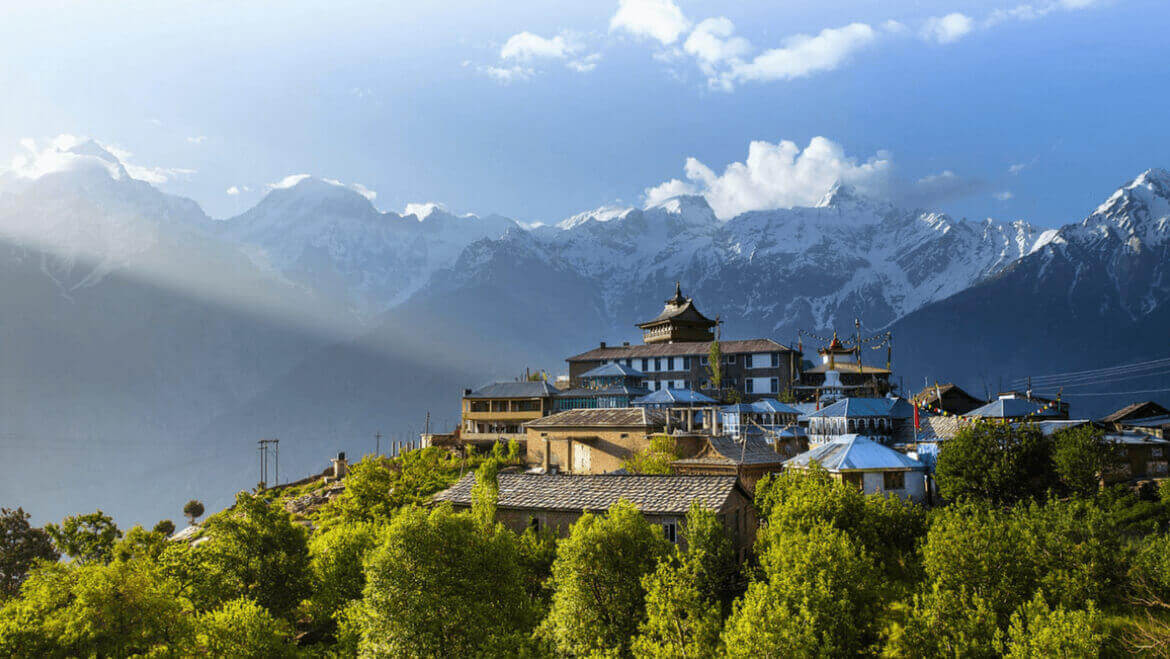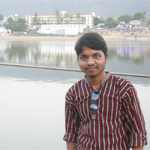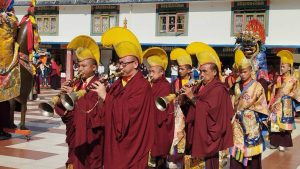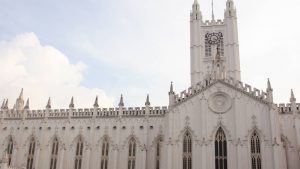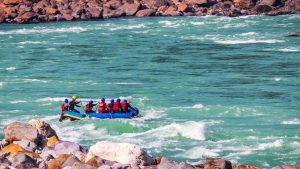The state of Himachal Pradesh, which lies in the Lower Himalayas Range, is a cultural cocktail, and a haven for nature lovers and adventure enthusiasts. There are many interesting facts about this state which most people are not aware of. Read on to find out 100 interesting facts about Himachal Pradesh.
Check out: Himachal Pradesh Tourism Guide
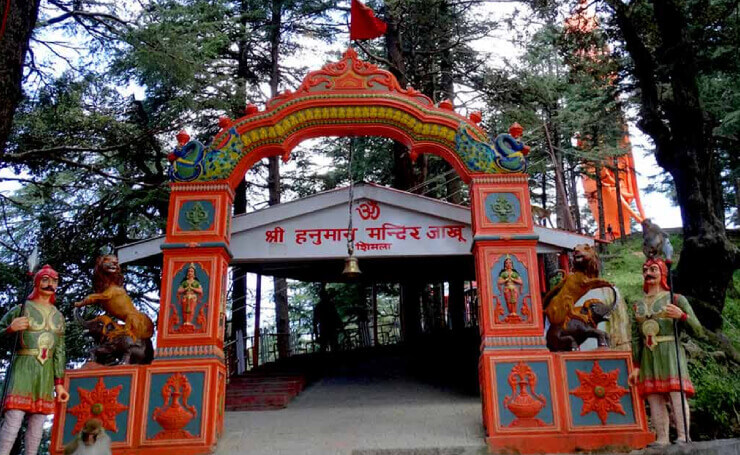
- The word Himachal is a combination of the Sanskrit words, “Hima” and “Anchal”, which means “snow” and “lap” respectively. It is no coincidence that the state is located in the lap of the Himalayas.
- The integration of four districts, Mandi, Chamba, Mahasu, and Sirmour, with 30 princely states, led to the formation of Himachal Pradesh as a Union Territory in 1948. Eventually, in 1971, the province attained statehood and become the 18th state in India.
- The capital of Himachal Pradesh is Shimla. The city sits atop seven hills, and is popularly referred to as the Queen of Hills.
- Dharamshala is the winter capital of the state.
- The area of Himachal Pradesh is 55,673 square kilometres.
- As per the 2011 census, the population of the state is 68,56,509.
- There are 68 assembly seats in Himachal Pradesh.
- There are 4 Lok Sabha seats in the state.
- The number of Rajya Sabha seats from Himachal Pradesh is 3.
- The state has 5 national parks.
- The principal languages spoken in Himachal Pradesh are Hindi and Pahari.
- The animal symbol of Himachal Pradesh is snow leopard.
- The bird symbol of Himachal Pradesh is Western Tragopan.
- The flower symbol of Himachal Pradesh is Pink Rhododendron.
- The Indian Cedar or Himalayan cedar is the tree symbol of Himachal Pradesh.
- Majority of the local populace is employed in the agricultural sector. Agriculture provides direct employment to over 65% of the state’s working population.
- Roughly 22% of the total state domestic product is attributed to income from agriculture and allied sectors.
- The Kalka-Shimla Railway fondly known as the Toy train is a UNESCO World Heritage Site.
- The Kalka-Shimla Railway traverses the steepest slope (over 5800 ft) in least distance (roughly 95 kms). The train crosses over 800 bridges and 100 tunnels.
- Followed by the southern state of Kerala, Himachal Pradesh is the least corrupt state in the nation. Tourists can enjoy a leisurely holiday without worrying about being overcharged. The beauty of Himachal Pradesh attracts many but the sincerity and goodness of locals adds to the visitor experience.
- As per government records, Himachal Pradesh is the third best state in terms of performance and overall development.
- Himachal Pradesh is home to nearly 17,000 educational institutes, including two medical colleges, three universities and one engineering college.
- Literacy refers to the ability of people to read and write in any language. As per the census of 2011, with a literacy rate of 83.78%, Himachal Pradesh has the 11th highest literacy rate in India.
- Among India’s greenest states, Himachal Pradesh has a staggering 37,033 square kilometres of forest area, which makes 66.52% of the total land area.
- Himachal Pradesh is home to 33 Wildlife Sanctuaries and 2 National Parks.
Other Interesting Blog to Read
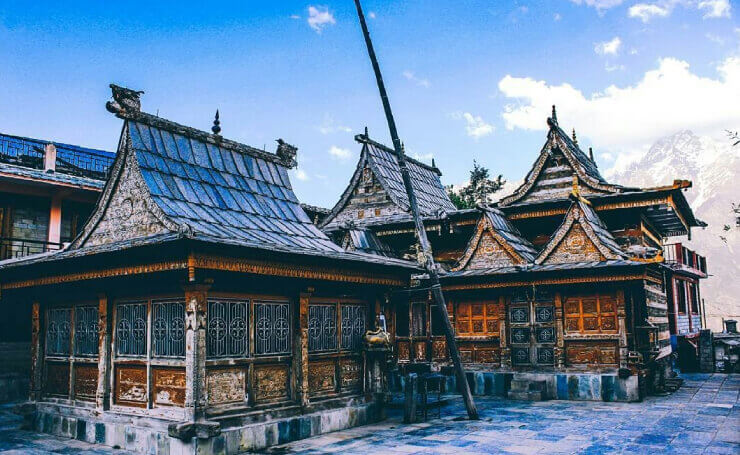
- Himachal Pradesh is home to the largest glacier in Asia. The Shigri Glacier is located in the Lahaul – Spiti area and feeds the Chenab River.
- The Manali – Leh National Highway is famed for being the highest motor able road in the world. Motorcycle enthusiasts flood the National Highway during summers for its picturesque landscape.
- Located in Kullu, the Great Himalayan National Park is recognized as a UNESCO World Heritage Site. The park is spread across nearly 1200 square kilometres, and is home to a vast variety of flora and fauna.
- At 22,360 feet above sea level, Reo Purgyil is the highest mountain peak in Himachal Pradesh.
- Built in 1891, the Chail Cricket Ground (located 8,018 ft above sea level), located in Chail, Himachal Pradesh, is famed to be the highest cricket ground in the world.
- The people of Malana believe that they have one of the oldest democracies in the world, and interestingly, it has its own set of Greek-resembling beliefs and ways. They even consider themselves the descendants of Alexander the Great.
- Himachal is known as the Land of Gods. The state is mentioned in many ancient Hindu texts, and is home to several religious points of interests. Locals from each village have their own distinct customs and deities in this culturally rich state.
- There are 9 hydro-electric power plants in the state.
- Himachal Pradesh has immense potential of hydro-electric power generation. It is estimated that roughly 27,000 MW (1/4th of the national potential) can be harnessed by building power plants.
- In 2013, Himachal Pradesh was declared to be the first smoke free state of India. The state passed laws to prohibit smoking in public places.
- As of 2nd October 2009, the state government has imposed a complete ban on all types of non-biodegradable polythene bags. Production, usage, sale and distribution of polythene bags are all banned under law.
- Himachal’s Solan is popularly known as the ‘Mushroom City’ because of the widespread mushroom production in the city.
- The town of Khajjiar is widely known as the ‘Mini Switzerland’ owing to its alluring natural beauty.
- Followed by Jammu and Kashmir, Himachal is the second largest producer of apples in India. Aptly called the Fruit Bowl of India, over 450 cultivars of apple are produced in the state. On an average, Himachal produces over 4 lakh tons of apples each year.
- The state of Himachal Pradesh is connected via 9 national highways (1,208 km), 19 state highways (1,625 km), and 45 major district roads (1753.05 km).
- Himachal Pradesh is home to three airports, Jubbar Hatti Airport (near Shimla), Bhuntar Airport (near Kullu), and Gaggal Airport (near Kangra). These airports run seasonal flights owing to extreme weather conditions. Shorter runways receive smaller aircraft, such as the 42-seater ATR and 18-seater Dornier.
- Several prominent Indian celebrities belong to Himachal Pradesh, like Preity Zinta, Kangna Ranaut, Anupam Kher, Mohit Chauhan, and Yami Gautam. Sportsperson hailing from Himachal who have represented India are Vijay Kumar (Shooting), Anuja Jung (Shooting), Deepak Thakur (Hockey), Samresh Jung (Shooting), Suman Rawat (Athletics), and Ajay Thakur (Kabaddi).
- Kullu Dussehra is a 7 days festival which was started by the 17th century king, Jagat Singh.
- Located in Kullu, Kasol is a quaint hilly town popularly known as Mini Israel. Frequented by Israeli tourists, the town’s many establishments bear signages in Hebrew.
- It is believed that the Chamba Kailash peak in Himachal Pradesh is the abode of Hindu God Shiva. Overlooking the Manimahesh Lake, the area is considered holy and auspicious by Hindus.
- A majority of the state lies in the foothills of Dhauladhar range.
- Owing to its fast development, the poverty levels in Himachal Pradesh witnessed a steep fall from 36.8% (1993) to 8.5% (2011).
- Himachal’s capital, Shimla, has Asia’s only natural ice-skating rink.
- It is said that the acclaimed Sanskrit scholar, Acharya Diwakar Datt Sharma, christened the state in 1948.
- It is believed that civilization flourished in the present-day area of Himachal 4,000 years ago, during the period of Indus Valley Civilization.
Other Interesting Blog to Read
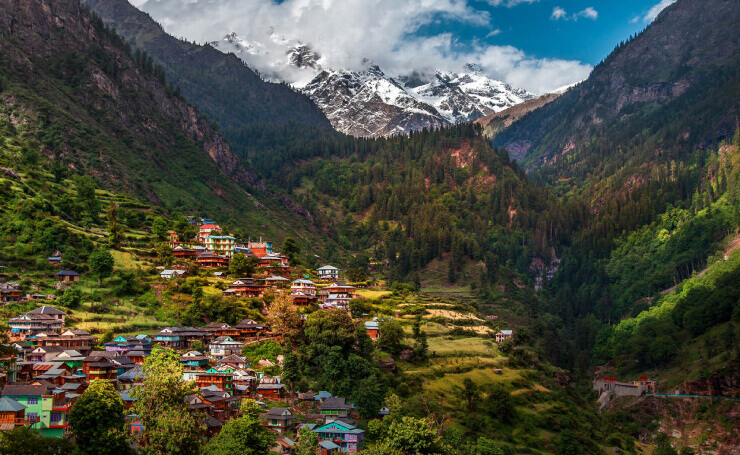
- Yashwant Singh Parmar was the first Chief Minister of Himachal Pradesh.
- With its extensive green spaces, it is no surprise that Himachal Pradesh is home to over 350 animal species and 450 bird species.
- As per government reports, Himachal Pradesh has achieved 100% sanitation. Each house in the state has a toilet.
- In 2015, the first Paragliding World Cup was hosted in Himachal.
- India’s oldest voter, Shyam Saran Negi, hails from Kalpa in Himachal Pradesh. He is a retired schoolteacher who cast the first vote in the 1951 general elections, and has voted in every general election since then.
- The Himachali traditional cap is worn across the state, especially during festivals and special events. The headgear is known as ‘Thepang’.
- Spiti Valley’s highest settlement, Tashigang village, is situated in the Sutlej river valley at 15,256 feet. The village’s polling station is considered to be the highest in the world.
- Shimla Mirch is native to Himachal Pradesh. Capsicum plantations were first introduced by the British.
- Shimla is home to the second oldest church in north India. Constructed in 1857, Christ Church is known for its stained-glass windows and its neo-gothic architecture.
- As per the 2011 census, the sex ratio in Himachal Pradesh is 972 females for 1000 males, against the national average of 940 females for 1000 males.
- Malana village is referred to as the ‘Village of Taboos’. Local ritual dictates that no outsider can touch anything without prior permission.
- Himachal Pradesh, known as the ‘Fruit Bowl of India’, produces a wide range of fruits including pear, apricot, peach, plum, apple, and more.
- Over 85 million years old fossils have been discovered in the Shivalik Fossil Park in Sirmaur district.
- Famous temples in Himachal Pradesh are Tara Devi, Jakhoo, Hadimba, Naina Devi, Baba Balak Nath, Jawala Devi, Chintpurni, and Chamunda Devi.
- Famous monarchs of Himachal Pradesh are Guru Ghantal Monastery, Tabo Monastery, Dhankar, and Lhalung
- Famous churches in Himachal Pradesh St. Michael’s Cathedral, Christ Church, and St. John’s Church.
- The famous Gurudwaras in Himachal Pradesh are, Gurudwara Bhangani Sahib, Paonta Sahib and Rewal Sahib Gurudwara.
- Himachal Pradesh has several important minerals like gypsum, mica, clays, barytes, limestone, iron, lead, and pyrite.
- Famous fairs held in the state are Baisakhi, Lavi, Holi Fair, and Kullu Dussehra.
- Famous dance forms native to Himachal Pradesh are the Gugga Dance, Losar Shona Chuksam, Ghurehi, and Kullu Naati.
- Malana village in Himachal has won the title of ‘Best Hashish’ twice: in 1994 and 1996.
- The state of Himachal Pradesh came into existence post-independence, so it has no pre-constitution history.
- There are 169 tehsils/sub tehsils in the state.
- The state has 59 towns.
- Himachal Pradesh has 3226 gram panchayats.
Other Interesting Blog to Read
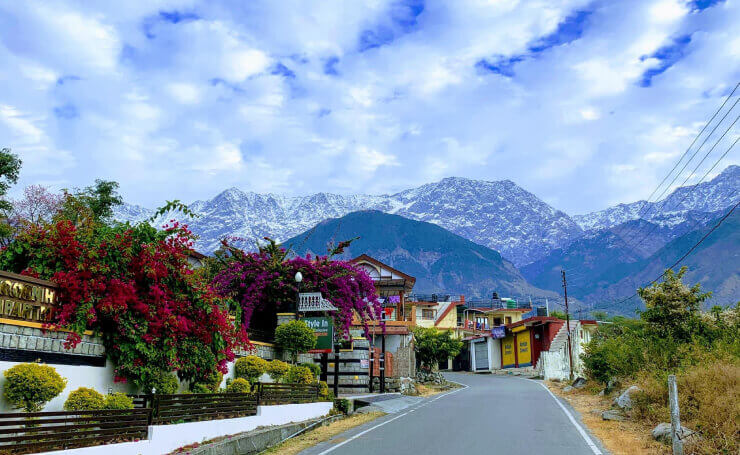
- There are 20690 villages in the state.
- The state ranks second-best after Kerala, in the list of best performing states on human development indicators.
- It has some of the oldest monasteries in Asia.
- Bir Billing is the center for aero sports in the state.
- Himachal Pradesh is known for its narrow-gauge railways.
- Hinduism is the major religion in the state.
- The state has remained mostly untouched by external customs, mainly due to the difficult terrain.
- Himachal Pradesh is famous for its handicrafts including carpets, paintings, leather works, stoles, and more.
- Lentils, rice, vegetables, and chapati form the staple food of the state.
- Himachal Pradesh also has its own IIT in Mandi.
- The approximate food grain production in the state is 1579,000 tonnes.
- The approximate vegetable production in the state is 900,000 tonnes.
- The approximate fruit production in the state is 1,027,000 tonnes.
- To buy an agricultural land, a non-agriculturalist needs to state the purpose behind buying the land. Government takes a decision within a set timeframe.
- Some of the major industrial areas in the state are Baddi, Parwanoo, Mehatpur, Shamsi, Gagret, and Bilaspur.
- The 14th Dalai Lama took refuge in Himachal Pradesh, and his current abode is in Dharamshala.
- The state was reorganized into 12 districts in 1972-73.
- Bilaspur was merged in the state in 1954.
- Virbhadra Singh was the Chief Minister with the longest term in the state. He was in the office for 21 years and 11 days.
- Sh. S. Chakravarti was the first governor of Himachal Pradesh.
- Kangra, and most of the other hilly areas of Punjab, were merged with the state in 1966.
- With the implementation of the Constitution of India, Himachal Pradesh became a Part C state.
- Himachal Pradesh has a plethora of trekking trails in Himalayas, making this state an excellent destination for adventure enthusiasts.
- Being bordered by Punjab, its culture and cuisine is profoundly impacted by it.
- Himachal Pradesh is the first Indian state to launch paperless e-governance solution, known as eVidhan.
Other Interesting Blog to Read
Here are the 100 interesting facts about Himachal Pradesh, some of which you may be aware of, others you may not. But they are all interesting nonetheless. Let us know how many of these did you know and which facts you found to be the most interesting.
Other Important Himachal Tourism Links
Like & Follow our social media accounts at Twitter, Facebook, Linkedin & Instagram for getting the latest updates & offers on holiday packages.
Disclaimer: We do not take credit for some of the licenced paid images used in our blogs, whether from Google Images, Fotolia & Shutterstock. All such images are the copyrights of their respective owners and we try to provide credit for them wherever we can. If, however, any copyright image has been used on our blog, the concerned person can either mail us directly to remove the image or provide credit to whomsoever the image may belong to.
About the author
Rahul Srivastava is an ardent travel writer who is born and brought up in the City of Nawabs- Lucknow. Being from to the culturally thriving land, he has a deep interest in discovering different hues of the country. He has travelled scores of places in India, and holds an affluent experience and knowledge about them. He loves to pen down his travel experiences and his quest for travelling new places is marked evidently in his blogs. His write-ups are the perfect reflection of his fervor for exploring the unexplored!

 +91-9212777225
+91-9212777225 Plan Your trip
Plan Your trip